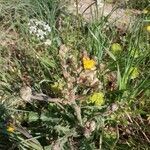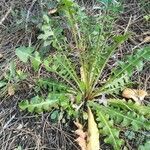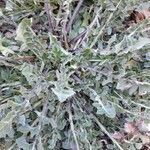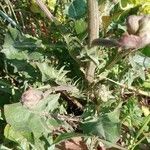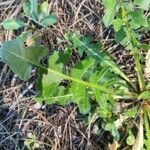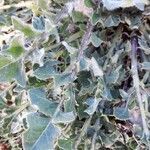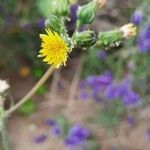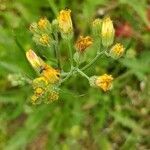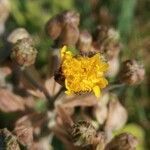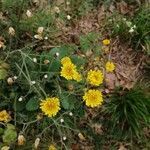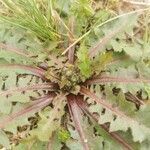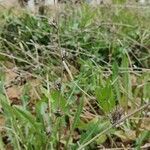Annual, biennial, or occasionally short-lived perennial; stem 1–8 dm, purple near the base, ± hispid or tomentulose or both; lvs finely short-hairy on both sides, the basal to 20 × 4 cm, narrowly oblanceolate to spatulate or obovate, dentate to runcinate-pinnatifid or pectinately parted; cauline lvs progressively reduced, auriculate-clasping; heads several to ± numerous; invol 8–12 mm, its inner bracts 9–13, tomentose and often glandular, sometimes with some short black setae distally, becoming carinate-thickened in fr; outer bracts up to ca half as long as the inner; fls numerous; achenes pale brown, 4–5.9 mm, 10-ribbed, gradually attenuate into a slender beak equaling or a little longer than the body; 2n=8, 16. Fields and waste places; native of the Medit. region and w. Europe, sparingly intr. into e. U.S. s. to N.C. May–July. Amer. plants are ssp. taraxacifolia (Thuill.) Thell.
A herb. It can grow each year from seed or take 2 years to complete its life-cycle. It grows 70 cm to 1.5 m high. The stems are branched. The leaves at the base are lyre shaped and softly hairy. They are fleshy and have wavy edges. Later leaves near flowering become lobed. The flowers are yellow. They are 2.5 cm across.
For description of subspecies occurring in Australia see Crepis vesicaria subsp. taraxacifolia (Thuill.) Thell. ex Schinz & R.Keller.
